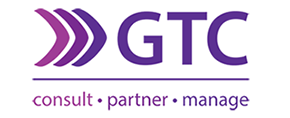Employers and medical aid members can exercise control over their medical aid increases by being more active
“Employers looking to assist employees in increasing their disposable income, would do well to focus more attention on increasing employees’ physical activity levels, thereby reducing absenteeism, decreasing the risk of staff illness, improving productivity and overall staff morale,” says Jill Larkan, Head: Healthcare Consulting.
“An efficient service component of most medical aids, available to all members is the ‘wellness programme’. Members engaged in such schemes are generally proven to be healthier,” says Larkan.“Healthier members cost the medical aids less and – in turn – medical aids then also become ‘healthier’. Consequently, healthier medical aids have lower annual increases, resulting in members having more disposable income.”
Larkan believes an active lifestyle is also a good way for people to decrease their medical bills, and in the long run, their annual medical aid increases.
“It is abundantly clear from research by medical schemes such as Discovery and Momentum – the two medical aid schemes with the biggest wellness incentive programmes in Vitality (700 000 main members) and Multiply (154 181 main members) – that members engaging in some form of activity on a regular basis have lower medical claims on average compared to those who are not active.”
Momentum’s research shows that members who engage with HealthReturns – on levels 4 and 5 – claim on average 25% less than those who do not engage. Even those engaged patients who are on chronic medication claimed less relative to the members not engaging in the programme. Momentum confirmed that there were on average, 18 000 members earning HealthReturns, every month for the year 1 January 2017 to 31 December 2017.
Research conducted by Discovery shows that Vitality members engaged in some or other level of fitness and activity also have lower hospital admission rates and shorter hospital stays on average, in addition to lower healthcare costs.
“Discovery’s research also showed that its Gold and Diamond Vitality members, those members that are most engaged in the programme, have a 41% lower probability of heart disease, a 53% decreased probability of diabetes and a 50% lower probability of being diagnosed with a lung disease.”
According to Larkan, these are powerful motivations for employers and human resource specialists to encourage a healthier and more active workforce, and in so doing manage absenteeism, productivity, healthcare costs and medical aid increases.
“If activity decreases the risk of non-communicable diseases, then inactivity must increase this risk. Diseases such as obesity and Type 2 diabetes, which are preventable non-communicable diseases cost medical aid members and the greater healthcare system a significant amount of money over a long period of time. Given our government’s intention to have the public healthcare system provide care to more citizens through its proposed National Health Insurance, it is crucial that we do more to decrease the existing strain on the system and economy in general” says Larkan.
The World Health Organisation reported in 2015 that one in four people in South Africa is obese, while research from local universities published in the International Journal of Epidemiology last year showed that the number of obese young South Africans doubled in the seven years between 2008 to 2015 – something which took 13 years to happen in the US.
Larkan emphasises that even a small amount of physical activity on a relatively regular basis can have a positive impact on members’ healthcare costs.
“The research shows improvements in overall health even for those members on the lowest level of engagement with their wellness programmes, but the most important factor is to take an active interest in your health and wellbeing. In this regard, employers can play a significant role, as the workplace is where most people spend the majority of their day. If employers encourage a healthy and active lifestyle motivated by workplace programmes and facilities, employees are more likely to engage in increased levels of activity,” she says.
“This is where engagement through the medical aid’s wellness programme as an initial measure of the workforces’ health status, will create a base from which to launch further focused wellness initiatives, based upon the findings of the initial engagement. The evidence of lower medical costs for medical aid members with a more active lifestyle should be a strong motivator for members in itself, at a time when members are often battling with rising additional medical costs and less and less spending money,” she adds.
GTC’s own annual medical aid survey – which provides a ranking of medical aid schemes in South Africa – was launched recently.
“Our research shows the material difference between healthcare cost increases over the ten years to 2016, as compared with salary growth, with more than a 20% variance. Medical aid premiums increasing cumulatively by 104.87% between 2006 and 2016, compared to cumulative average salary increases of 80.2% over the same period. Becoming more active may be a fast and easy way for members to manage their growing costs,” concludes Larkan.





